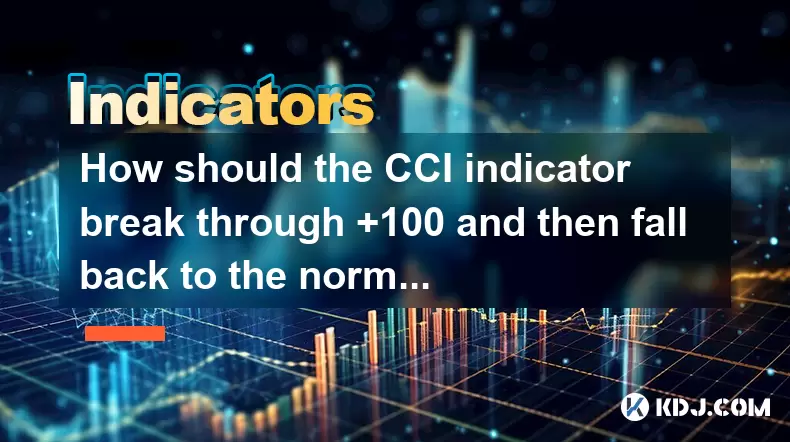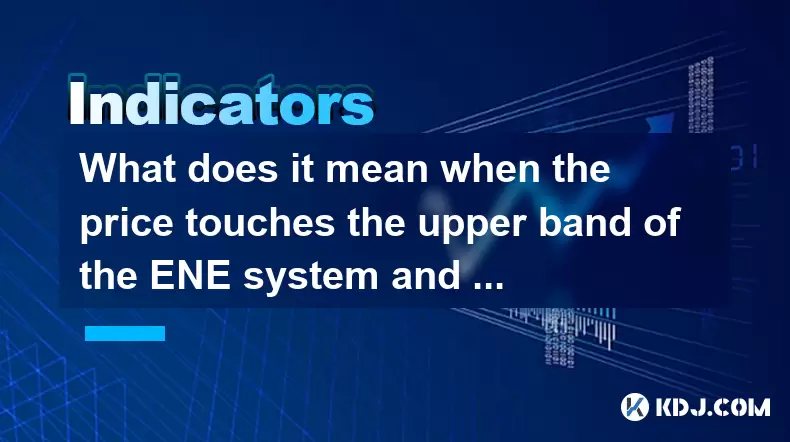-
 Bitcoin
Bitcoin $116700
0.48% -
 Ethereum
Ethereum $4213
6.27% -
 XRP
XRP $3.280
1.22% -
 Tether USDt
Tether USDt $1.000
0.02% -
 BNB
BNB $805.1
2.46% -
 Solana
Solana $180.2
2.65% -
 USDC
USDC $0.0000
0.02% -
 Dogecoin
Dogecoin $0.2412
8.50% -
 TRON
TRON $0.3356
-1.11% -
 Cardano
Cardano $0.8108
3.59% -
 Hyperliquid
Hyperliquid $43.89
8.53% -
 Chainlink
Chainlink $21.15
10.75% -
 Stellar
Stellar $0.4502
1.41% -
 Sui
Sui $3.935
4.69% -
 Bitcoin Cash
Bitcoin Cash $570.7
-1.75% -
 Hedera
Hedera $0.2636
3.28% -
 Avalanche
Avalanche $24.25
4.48% -
 Ethena USDe
Ethena USDe $1.001
0.03% -
 Litecoin
Litecoin $122.0
-0.08% -
 Toncoin
Toncoin $3.445
2.68% -
 UNUS SED LEO
UNUS SED LEO $8.979
-0.08% -
 Shiba Inu
Shiba Inu $0.00001379
6.73% -
 Uniswap
Uniswap $10.91
2.00% -
 Polkadot
Polkadot $4.106
5.39% -
 Dai
Dai $1.000
0.02% -
 Pepe
Pepe $0.00001227
9.07% -
 Bitget Token
Bitget Token $4.507
0.72% -
 Cronos
Cronos $0.1576
3.40% -
 Monero
Monero $272.0
-1.68% -
 Ethena
Ethena $0.7502
21.27%
How should the CCI indicator break through +100 and then fall back to the normal range?
The CCI above +100 signals strong bullish momentum in crypto, often from news or volume spikes, but its return to the -100 to +100 range reflects cooling momentum, not necessarily a reversal—context matters.
Aug 09, 2025 at 03:14 pm

Understanding the CCI Indicator and Its Standard Range
The Commodity Channel Index (CCI) is a momentum-based oscillator widely used in cryptocurrency trading to identify overbought and oversold conditions. It typically fluctuates around a centerline of 0, with readings above +100 indicating overbought territory and readings below -100 signaling oversold conditions. The standard range for normal market activity lies between -100 and +100. When the CCI moves beyond +100, it suggests strong upward momentum, often driven by aggressive buying pressure in assets like Bitcoin or Ethereum. However, a sustainable move above this threshold is rare, and a subsequent return to the normal range is common. This behavior is especially pronounced in volatile crypto markets where rapid price swings trigger temporary extremes in momentum indicators.
What Triggers a Break Above +100?
A breakout above +100 on the CCI usually occurs when a cryptocurrency experiences a sharp price increase over a short period. This can be caused by several factors:
- Positive news events, such as exchange listings, protocol upgrades, or institutional adoption
- Increased trading volume that fuels momentum-driven buying
- Short squeezes in leveraged markets, especially on futures platforms
- Whale accumulation or coordinated buying activity
During such scenarios, the typical price deviation from the moving average increases significantly, which directly impacts the CCI calculation. The formula for CCI is:
CCI = (Typical Price – SMA) / (0.015 × Mean Deviation)
Where:
- Typical Price = (High + Low + Close) / 3
- SMA = Simple Moving Average of the typical price over the period (usually 20)
- 0.015 is a constant that ensures most values fall within the -100 to +100 range
- Mean Deviation = average absolute deviation of typical prices from the SMA
When the typical price diverges sharply from the SMA, the numerator grows, pushing the CCI above +100.
How the CCI Returns to the Normal Range
After exceeding +100, the CCI often reverts back into the -100 to +100 range due to stabilizing price action. This pullback can happen in several ways:
- Profit-taking by traders who sell after a rapid price rise
- Diminishing buying volume, leading to reduced upward momentum
- Price consolidation where the asset trades sideways, allowing the SMA to catch up
- Mean reversion tendencies inherent in oscillator design
As the price increase slows, the deviation between the typical price and the SMA narrows. This causes the numerator in the CCI formula to shrink. Simultaneously, the mean deviation may stabilize or decrease slightly, further contributing to the CCI’s descent. The return to the normal range does not necessarily indicate a price drop—it may simply reflect a moderation in the rate of ascent.
Interpreting the CCI Pullback: Bullish or Bearish?
The meaning of the CCI falling back from above +100 depends on the broader price context:
- If the price continues to rise or holds at higher levels while the CCI re-enters the normal range, it may indicate a healthy consolidation rather than a reversal
- If the price starts to decline as the CCI drops, it could signal momentum exhaustion and a potential bearish shift
- A failure to make higher highs in price while the CCI retreats might suggest weakening bullish strength
Traders often use divergence analysis in such cases. For instance, if the price makes a new high but the CCI fails to exceed its prior peak above +100, this bearish divergence can warn of an impending correction. Conversely, if the price stabilizes and the CCI remains above 0 while re-entering the normal band, it may suggest underlying strength.
Practical Steps to Monitor and Trade This Pattern
To effectively respond when the CCI breaks above +100 and then retreats, follow these steps:
- Confirm the breakout: Ensure the CCI has clearly crossed above +100 and remained there for at least one full candle (e.g., 1-hour or 4-hour, depending on your timeframe)
- Observe price action: Check whether the price is peaking, consolidating, or continuing upward during the CCI decline
- Watch for volume changes: Decreasing volume on upward moves during the pullback may confirm weakening momentum
- Use additional indicators: Combine CCI with RSI, MACD, or volume profile to validate signals
- Set conditional orders: Place a take-profit order near recent resistance if bearish signs appear, or a trailing stop if the trend remains intact
- Avoid immediate shorting: A return to the normal range isn’t a sell signal by itself—wait for confirmation such as a close below 0 or a break of key support
For example, on a Binance BTC/USDT 4-hour chart, if CCI rises to +130 during a news-driven rally and then drops to +70 over the next six candles, examine whether Bitcoin’s price is still above the 20-period EMA. If yes, the uptrend may persist despite the CCI cooling off.
Common Misinterpretations and How to Avoid Them
Many traders misread the CCI’s return from above +100 as a definitive reversal signal. This can lead to premature exits or short entries. To avoid this:
- Do not assume overbought = reversal: Strong trends can keep CCI above +100 for extended periods, especially in bull markets
- Avoid using CCI in isolation: Always cross-verify with price structure, support/resistance, and volume
- Adjust the period setting cautiously: While the default is 20, changing it affects sensitivity. A longer period (e.g., 40) reduces noise but may lag
- Recognize market regime: In highly volatile altcoin markets, CCI swings are more extreme and frequent than in stablecoins or large caps
Frequently Asked Questions
Q: Can the CCI stay above +100 for multiple days in crypto markets?
Yes, during strong bullish trends—such as Bitcoin’s surge after halving events—the CCI can remain above +100 for several days. This reflects sustained momentum and does not automatically imply a reversal is imminent.
Q: What timeframes are best for observing CCI breakouts and pullbacks?
The 4-hour and daily charts provide reliable signals with fewer false breakouts. Shorter timeframes like 5-minute or 15-minute generate more noise, making it harder to distinguish genuine momentum shifts.
Q: Should I exit my long position when CCI falls back below +100?
Not necessarily. Exiting should depend on price behavior. If the asset is still making higher lows and volume remains strong, the pullback in CCI may just reflect normalization. Wait for additional bearish confirmation before closing a position.
Q: How does the CCI behave during sideways crypto markets?
In ranging markets, the CCI typically oscillates between -100 and +100 without sustained breakouts. Spikes above +100 are short-lived and often reversed quickly, making them useful for fade-the-top strategies.
Disclaimer:info@kdj.com
The information provided is not trading advice. kdj.com does not assume any responsibility for any investments made based on the information provided in this article. Cryptocurrencies are highly volatile and it is highly recommended that you invest with caution after thorough research!
If you believe that the content used on this website infringes your copyright, please contact us immediately (info@kdj.com) and we will delete it promptly.
- Trump, Crypto Vehicle, and WLFI Tokens: A New York Minute on the Latest Buzz
- 2025-08-10 00:30:12
- Wheat Penny Fortune: Unearthing Valuable Coins in Your Pocket Change
- 2025-08-10 00:35:19
- AI Coin Mania: Dubai Millionaires Eye 20x Gains!
- 2025-08-09 23:10:12
- ChatGPT's Hot Takes: Meme Coins to Buy Now for a Wild 2025!
- 2025-08-09 23:10:12
- Jurassic Park Vibes in Your Pocket: The Colourful Canadian Coin Featuring a Dinosaur Eye
- 2025-08-09 23:50:12
- Altcoins on the Radar: VeChain, Ethereum, and the Shifting Crypto Landscape
- 2025-08-09 23:50:12
Related knowledge

What does it mean when the price is trading above the SAR indicator but the red dots are densely packed?
Aug 09,2025 at 11:49pm
Understanding the SAR Indicator and Its Visual SignalsThe SAR (Parabolic Stop and Reverse) indicator is a technical analysis tool used primarily to de...

What does it mean when the MACD histogram continues to shorten but the price reaches a new high?
Aug 09,2025 at 09:29pm
Understanding the MACD Histogram and Its ComponentsThe MACD (Moving Average Convergence Divergence) indicator is a widely used technical analysis tool...

What does it mean when the Triple Moving Average (TRIX) turns downward but the price doesn't fall?
Aug 09,2025 at 12:42pm
Understanding the Triple Moving Average (TRIX) IndicatorThe Triple Moving Average, commonly known as TRIX, is a momentum oscillator designed to filter...

What does it mean when the price touches the upper band of the ENE system and then falls back?
Aug 10,2025 at 12:42am
Understanding the ENE Indicator StructureThe ENE (Envelope) indicator is a technical analysis tool used in cryptocurrency trading to identify potentia...

What does it mean when the Williams' oscillator repeatedly hits bottoms but fails to rebound?
Aug 09,2025 at 09:28am
Understanding the Williams %R OscillatorThe Williams %R oscillator, developed by Larry Williams, is a momentum indicator used in technical analysis to...

What does it mean when the upper and lower Bollinger Bands narrow?
Aug 09,2025 at 03:00pm
Understanding Bollinger Bands in Cryptocurrency TradingBollinger Bands are a widely used technical analysis tool in the cryptocurrency market, develop...

What does it mean when the price is trading above the SAR indicator but the red dots are densely packed?
Aug 09,2025 at 11:49pm
Understanding the SAR Indicator and Its Visual SignalsThe SAR (Parabolic Stop and Reverse) indicator is a technical analysis tool used primarily to de...

What does it mean when the MACD histogram continues to shorten but the price reaches a new high?
Aug 09,2025 at 09:29pm
Understanding the MACD Histogram and Its ComponentsThe MACD (Moving Average Convergence Divergence) indicator is a widely used technical analysis tool...

What does it mean when the Triple Moving Average (TRIX) turns downward but the price doesn't fall?
Aug 09,2025 at 12:42pm
Understanding the Triple Moving Average (TRIX) IndicatorThe Triple Moving Average, commonly known as TRIX, is a momentum oscillator designed to filter...

What does it mean when the price touches the upper band of the ENE system and then falls back?
Aug 10,2025 at 12:42am
Understanding the ENE Indicator StructureThe ENE (Envelope) indicator is a technical analysis tool used in cryptocurrency trading to identify potentia...

What does it mean when the Williams' oscillator repeatedly hits bottoms but fails to rebound?
Aug 09,2025 at 09:28am
Understanding the Williams %R OscillatorThe Williams %R oscillator, developed by Larry Williams, is a momentum indicator used in technical analysis to...

What does it mean when the upper and lower Bollinger Bands narrow?
Aug 09,2025 at 03:00pm
Understanding Bollinger Bands in Cryptocurrency TradingBollinger Bands are a widely used technical analysis tool in the cryptocurrency market, develop...
See all articles

























































































